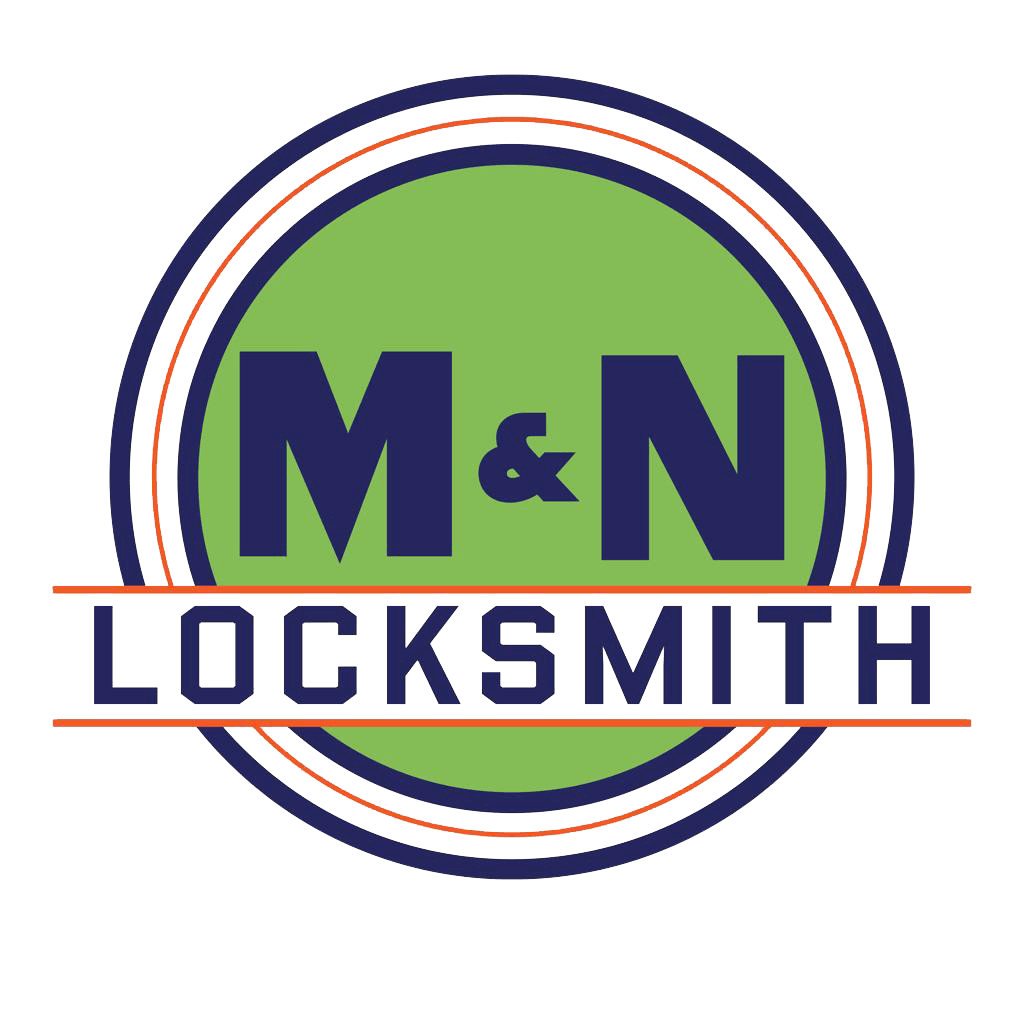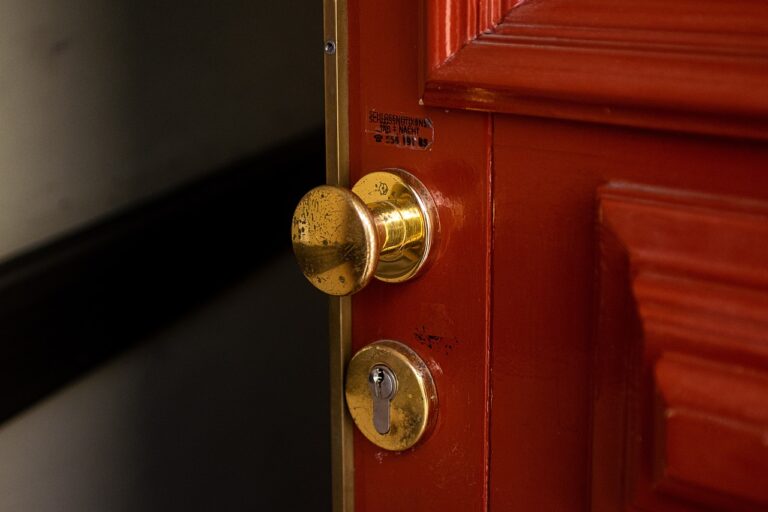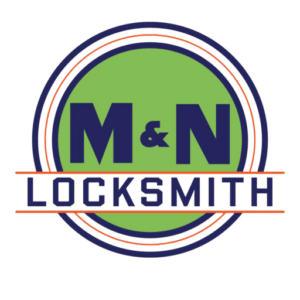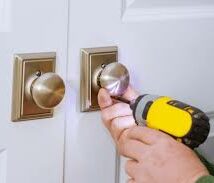Knob locks are one of the most common types of locks that you will come across in your daily life. You probably have a knob lock installed on the doors of your home, office, or even your car. In this comprehensive guide, we will dive into the necessary information you need by providing you with a comprehensive understanding of knob locks.
A doorknob lock is a kind of lock that is often used on doors for security and privacy. In it, there exists a knob having an inbuilt lock system. By turning the knob, one can decide if it should engage or disengage the lock, thus allowing the door to open or close. It is usually installed inside the room and can be easily used from both sides.
This article includes the following;
- How do these knob locks work?
- What are the different types of knob locks?
- Advantages of using a knob lock
- Factors to Consider When Choosing a Knob Lock
- Common Problems and Fixes for Knob Locks
- When to Consult Professional Locksmiths for Knob Lock Issues
- Tips for Maintaining and Extending the Lifespan of a Knob Lock
- Knob Lock Installation and Replacement Guide
How does a knob lock work?
To understand how a door handle works, let us scrutinize its components. The key elements of this mechanism are usually as follows: door handle, latch, strike plate, and locking mechanism. When a person turns the knob, it rotates the spindle attached to a latch. A latch may describe itself as a metal plate sliding into the strike plate placed within the frame of opposing doors thus ensuring security when closed thereby keeping them both intact and fastened securely shut. On turning in the opposite direction, however, the latch withdraws giving way for the opening of such entry.
Types of Knob Locks
In the market, there are different types of knob locks each with its features distinct from the others. Common ones include passage knob locks; privacy knob locks; dummy knob locks.
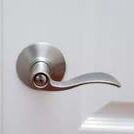
Passage knob locks
Normally these are found in internal rooms that don’t need high-level security because they lack any form of locking system to allow easy passage between rooms.
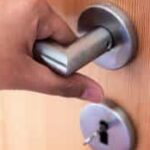
Privacy knobs
These are mostly found in bathrooms and bedroom doors. There is a panic button or twist system on one side which you twist to activate or deactivate while still inside your house but has an emergency release option such that someone outside can open it during emergencies.
Dummy knobs
They have no actual use except being installed on double doors for aesthetic purposes only or if you want all your doors to look similar by having the same number of handles on every door you install so that they become symmetrical; therefore they lack any latching mechanism altogether.
Advantages of using a knob lock
There are several advantages to using a knob lock for your doors. Firstly, these locks are easy to operate. It is very convenient because, with the help of these handles, you can make any door closed or opened by simply turning it. Additionally, they come in different designs and styles that match your house or office outlook.
Another reason why people use knob locks is based on their security needs such as privacy. Though not as secure as deadbolt locks, they discourage anyone who might have intentions of entering without permission through them. Nevertheless, this type is relatively cheaper than all other types of locks making it affordable for protecting doors.
Factors to Consider When Choosing a Knob Lock
When selecting a doorknob lock, several factors should guide you. One of the most paramount factors is the level of security offered by such door handle lock systems manufactured from high-quality materials and having built construction tend to be more reliable while those that have been approved by relevant agencies should also be sought after.
Another thing to look at is the sort of door where you would be placing the knob lock. Different doors require different kinds of knob locks. For example, it is recommended you install a door in your outside house with a deadlocking mechanism for added security.
In addition, consider its design and finish. You need a lock that not only guards but also improves the beauty of your doors. Select a model that blends well with the entire style of your home or office.
Common Problems and Fixes for Knob Locks
Just like any other mechanical device, knob locks can have some issues as time goes by. Some common problems that may occur include; a misaligned strike plate, sticky latch, and loose doorknob. Luckily most of these issues can be fixed easily using some basic tools and little expertise.
If your doorknob feels loose, you can tighten it by removing the decorative plate on the interior side of the door and tightening the screws that hold the knob in place. If there is stickiness on the latch you can use silicone-based lubricant to make it operate smoothly. In case there is any misalignment with the strike plate then just loosen up the screws and relocate them so that the latch will align properly.
When to Consult Professional Locksmiths for Knob Lock Issues
While many knob lock problems can be solved without professional help, there are certain instances whereby locksmith assistance is ideal. A locksmith remains useful if they cannot resolve an issue or when a lock becomes too damaged beyond repair. They possess the expertise required to address complicated lock problems through diagnosis and fixing methods.
Additionally, if you are looking to upgrade your knob lock or install a new one, you will get support from expert locksmiths who will guide you in selecting the right models according to suitable mechanisms for home application standards in installation cases as well as proper product choice all along with maintenance tips too. They will provide advice on security measures and suggest additional locks or security systems that could make your premises safer.
Tips for Maintaining and Extending the Lifespan of a Knob Lock
To ensure that your knob lock lasts longer and operates optimally, some simple maintenance tips should be observed. One should regularly check whether there are any signs of wear or damage on the lock. In case any problem is identified, it has to be attended to promptly to prevent further damage.
Use a soft cloth along with mild detergent to clean the lock. Avoid harsh chemicals and abrasive cleaners as they may harm the finish of your lock. Apply silicone-based lubricant on moving parts such as latch and spindle to facilitate their smooth operation.
Knob Lock Installation and Replacement Guide
Follow these step-by-step instructions when installing or replacing a knob lock:
- Start by removing the old knob lock from the door. Unscrew the screws that hold the knob in place and pull the knob out.
- Next, remove the strike plate from the door frame. Unscrew the screws and take out the plate.
- Measure the backset of the door, which is the distance from the edge of the door to the center of the doorknob hole.
- Choose a new knob lock that matches the backset measurement and the style of your door.
- Insert the latch into the hole on the edge of the door. Make sure the latch is facing the correct direction.
- Secure the latch with the screws provided.
- Place the new knob on the door and align it with the latch. Insert the spindle into the latch and screw the knob in place.
- Install the strike plate on the door frame, making sure it aligns with the latch.
- Test the knob lock to ensure it is working properly.
Conclusion
Knob locks are a versatile and popular choice for securing doors in homes, offices, and other buildings. They are easy to operate, provide a basic level of security, and come in a variety of designs to suit different styles. By understanding how knob locks work, knowing the different types available, and considering important factors when choosing a lock, you can make an informed decision for your security needs. Remember to maintain your knob lock regularly and seek professional assistance when needed. With proper care and maintenance, your knob lock will continue to serve you well and keep your doors secure.
Frequently Asked Questions
1. Can a knob lock be used on an exterior door?
While a drove of people use them as a way to secure their front doors, experts recommend incorporating them together with deadbolt locks just for increased safety. An independent use of such locks will prevent unauthorized access inside.
2. How do I know if my knob lock is secure?
Look out for finely tailored knobs made from durable materials which have been certified by established bodies required by law while considering adding extra safety measures like getting those having deadlocks that increase resistance against tampering.
3. Can I install a knob lock myself?
Yes, you can fix a knob lock by yourself if you possess the necessary tools with you and follow any given guidelines. However, in case you are uncertain or perhaps want to enjoy professional fitting it is best to employ the service of a qualified locksmith.
4. How often should I lubricate my knob lock?
The turning mechanism of your door might begin sticking without any warning as another sign that an ointment application should be done to your knob for the second time this year at least. Use a stickiness-free oily material.
5. Can I rekey a knob lock myself?
To reset or rather change your key code on a doorknob lock, special devices and expertise are required thus it’s better to find an expert locksmith for proper functionality and security assurance.
6. How long does a knob lock last?
How long do these locking mechanisms usually serve their owners? It all depends on factors such as the regularity with which they are used, and maintained and how good or bad is their quality. Do not worry about anything when taking care of it; there is no doubt that if properly handled, even high-ended ones will stay longer than others.
